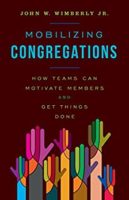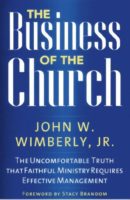
While many people seek out like-minded gatherings to avoid conflict, my experience as a consultant over the last 14 years tells me there is a large marketplace of people who prefer gatherings of people with diverse viewpoints who can discuss issues without screaming at each other. By creating diverse congregations, we have an opportunity to lead society out of its current polarized condition, rather than reflecting it ourselves.
Some of the healthiest congregations I have worked with are “purple.” They are filled with people who vote differently from one another or don’t vote at all, who are vegan and meat-eaters, who like classical or contemporary church music, who prefer different types of church architecture, etc. They laugh together, worship together, do mission projects together, and grieve together. They are congregations at their very, very best. And they are succeeding in our highly polarized society.
Homogeneity and Decline
However, these congregations seem to be the exception, rather than the rule as they were when I first entered the ministry. As the country split into polarized political/theological camps toward the end of the 20th century, congregations followed the flow of secular trends. Congregations increasingly have come to be identified (whether they want to or not) as progressive or conservative, mainline or evangelical.
In my opinion, it is no coincidence that congregations started to decline in vitality and membership as they lived into these polarized identities. A pivotal moment in Christian history came when Paul and Peter argued over the makeup of the church. Was it going to be a homogenous or heterogenous group? Peter argued for homogeneity, maintaining that the church was for people from the Jewish traditions and Gentiles should convert to the Jewish law prior to becoming Christians. Paul argued for heterogeneity, claiming that God was calling the church to take the Gospel to the Gentiles and that we are saved by faith, not adherence to rules. Because Paul won the argument, in the following years, the church grew rapidly in membership.
Meanwhile, the church in Jerusalem insisted on remaining homogeneous insisting that Gentiles must give up their old beliefs and practices to join. As a result, the Jerusalem church declined in size and influence.
Making Newcomers Convert
Today mainline congregations require “Gentiles” to convert to progressive secular beliefs as well as progressive theological beliefs to be comfortable. The same thing happens in conservative congregations where “Gentiles” must convert to conservative secular and theological beliefs to fit in.
I experienced this phenomenon in a congregation I served from 1983 to 2012. When I arrived at Western Presbyterian Church in downtown Washington, DC, it was a small congregation that the presbytery had twice considered closing so they could sell the property. Fortunately, they didn’t. A core of about 70 members, of whom 65 were over 65 years old, were determined to keep Western alive and grow. By the time I retired in 2012, the congregation had 350 members (of whom about 60% were under 50), a budget of almost $1 million, and many major mission programs, including feeding 250 homeless people daily. Because of the commitment of the old-timers and the younger people who joined along the way, the congregation thrived.
Along the way, however, we lost our heterogeneity. In 1983, the congregation was somewhat diverse politically and theologically. Most were centrist Democrats or Republicans, with a few members and regular attendees who worked in the Reagan White House. Folks had civil, informed debates on the issues of the day.
Theologically, we had a few evangelicals, but most of the members held the traditional beliefs of mainline denominations (the Bible was not to be read literally, Jesus is the Christ, Trinitarian, openness to the validity of other major faiths, etc.).
Over thirty years, as the congregation grew in membership and mission, Western attracted an increasing number of progressive members, but not conservatives. I did my best to preach sermons that would irritate progressives, but all to no avail! Members knew I am progressive by nature. They saw my occasional criticisms of progressive orthodoxy to be temporary madness!
Like-Minded Congregations
All of this leads me to what I consider one of the most challenging problems for congregations today: too many have become gatherings of like-minded people. For example, a reform synagogue tends to be filled with people who are center and left politically. An orthodox synagogue tends to be filled with members who are center and right. The number of congregations, of any faith, that are truly purple is fading faster than the number of members in congregations of all types.
I have no surveys or hard data to prove that people yearn for more heterogeneity in their congregations. I only have my experience with 100 congregations I have worked with and the focus groups I have been conducting in large Methodist Conferences. The healthiest congregations are not polarized. In my focus groups, people worry out loud about their congregations being increasingly polarized, which perfectly mirrors the polarization in secular society. By becoming polarized, congregations are reflecting society, not leading it. If polarization is so satisfying, why are congregations of all political and theological stripes declining in membership and impact?
Lead or Follow?
If we want to be different from secular society, can we not find ways to create congregations where people of significantly different political, cultural and economic worldviews can worship, think about, and serve God together? If we want to be reconcilers of the world, pursuing tikkun (healing the world), can we stop being such glaring examples of the brokenness and division of the world? Is it any wonder that younger generations affirm their spirituality but resist religion when they see congregations mirroring the worst societal trends?
To lead rather than reflect society, congregations need to have honest conversations about just how polarized we have become. When someone says, “I don’t want to be in a Bible study with someone who voted for Trump/Harris!”, we need to talk about that. And if a large enough group of members affirms heterogeneity as a goal, we will need to create strategies to make it happen. We can’t wish heterogeneity into being—it requires commitment and intentional, pragmatic, effective strategies.
Will an embrace of homogeneity create the kind of growth for congregations that followed the debate between Peter and Paul? I don’t know. But the decline of congregations will surely continue if we opt for the homogeneity of the early Jerusalem church which doomed itself to irrelevancy.
John Wimberly is an experienced pastor and consultant. As a consultant, he has worked with congregations and judicatories on strategic planning, staff designs for the 21st century, and congregational growth as well as financial and administrative management. He has MBA, MDiv, and PhD (theology) degrees. His books focus on effective management and leadership. John believes congregations can have a bright future!



